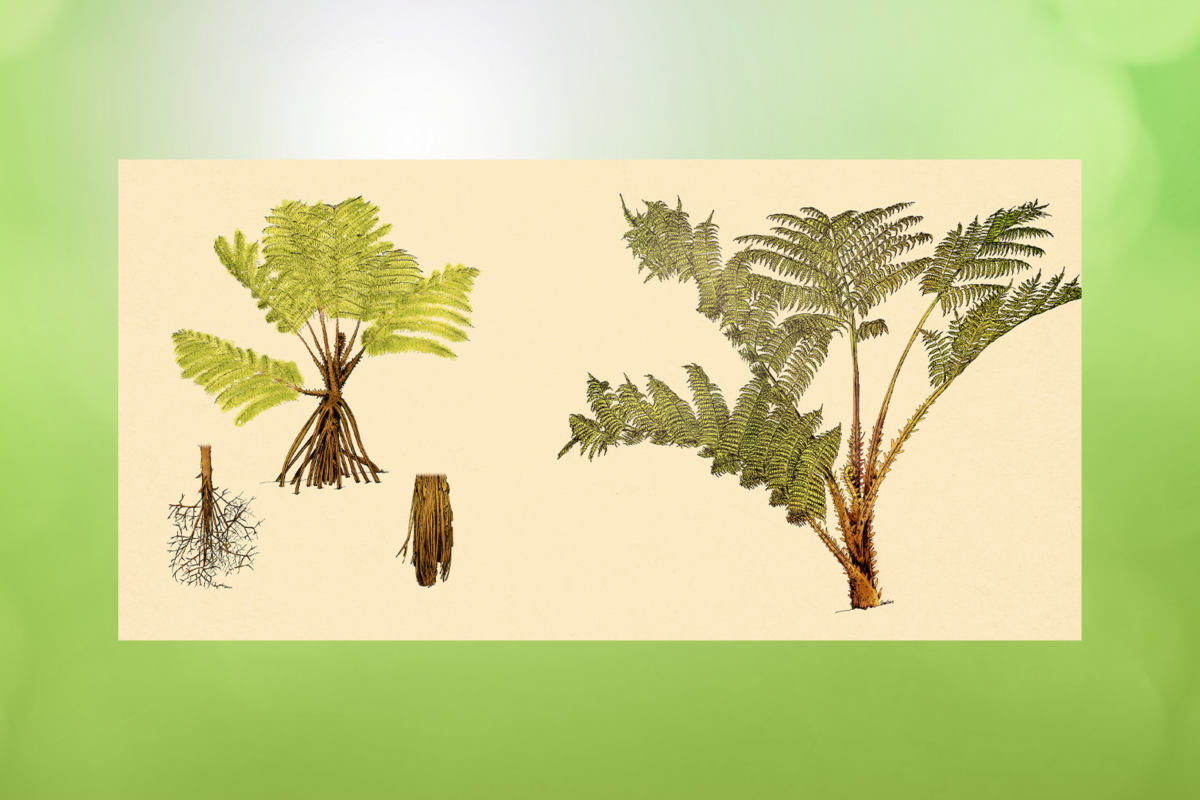Scientists have discovered a zombie tree that converts its leaves into roots as it dies.
The Cyathea rojasiana tree fern, which is native to Panama in Central America, was studied by plant biologists across multiple institutions. Their findings are published in the journal Ecology.
They found that the tree restores its dead leaves and converts them into roots. These roots then feed nutrients back into the tree, making it come alive once again, the study reported.
This is the first time this phenomenon has ever been reported in a tree.

University of Illinois Urbana-Champaign plant biology professor James Dalling described the finding in a summary as a "truly novel repurposing of tissue."
"[I was] very surprised—gobsmacked even! The site where this tree fern grows is extremely wet and infertile. Its an old volcanic ash deposit that has very deep silica rich soils that are very low in mineral nutrients," Dalling told Newsweek.
"As a consequence the plants that grow there try to capture nutrients on the soil surface as plant material starts to decompose. So, we are used to seeing roots lying on the soil or even growing up the trunks of other plants. My first impression was that the roots we were seeing must have come from another plant. We could tell in the field that the roots were somehow connected to the tree fern, but wasn't until we dissected some of these old dead leaves in the lab that we could confirm that the roots were produced by the tree fern itself and were part of an existing structure of the leaf—the old vascular tissue of the leaf had been repurposed."
Dalling, who is also a research associate at the Smithsonian Tropical Research Institute in Panama, made the discovery while studying a completely different plant in a forest reserve.
He found that the dead leaves of the Cyathea rojasiana had implanted themselves deep into the soil. He then realized that the dead leaves had roots growing from them.
After some lab work to find out more, researchers found these roots were actively drawing nitrogen out of the ground, and feeding it back into the original plant, the study reported.
Usually, fallen leaves and shoots from trees will create a completely new plant. But the Cyathea rojasiana works to sustain itself. Dalling suggested this has never been reported before because the dead leaves look like decaying plant matter. Therefore, it is easy to overlook them and realize that they are not dead at all, but are coming back to life.
"As far as we can tell this is completely unique. After discovering this I contacted some fern specialists and plant physiologists that work on root development and plant water relations to see if they'd seen anything like this," Dalling said. "The response was always 'Wow—that's weird!' We are familiar with ferns and other plants that grow new plantlets at the tips of their leaves—like the spider plant for example and there are some 'proliferous' ferns that do this as well. It appears that the adaptation that we have observed is unrelated. The roots do not produce new plantlets, and the roots themselves are not newly developed tissue provisioned from a living leaf, instead the vascular tissue differentiates into rootlets after the leaf is dead."
The Cyathea rojasiana is an ancient tree and can be traced back to the Jurassic period, the study reported. The researchers believe that it adapted to this phenomenon due to the poor nutrients of the volcanic soil at the time.
Scientists know that this tree also grows incredibly slowly over time. A summary of the study's findings described this as a "major investment of resources" when the plant repurposes itself.
"After the paper was published a fern taxonomist, Robbin Moran, looked at the collections made for this species, Cyathea rojasiana, in the herbarium of the Missouri Botanic Garden. It appears that our zombie leaf tree fern from Fortuna is a different species from other populations that have been given the same name. So its also exciting to find that this species is endemic to the watershed of one small stream in one protected area in Panama," Dalling said.
"So, I'd like to know if this is an adaptation that is only found in one species in one location in the world, or if this trait has been overlooked in other tree ferns—which would be understandable—afterall who looks for roots in dead leaves? There are also questions about how the tree fern does this—what developmental processes occur to allow differentation of the vascular tissue, especially when the surrounding tissue within the leaf is all dead. Finally, my research is looking at the fungal associates that plants maintain in their roots and that are important for nutrient acquisition in nutrient-poor tropical soils. I'd love to know whether there are fungi that colonize these leaf-roots."
Update 01/30/24, 10.38 a.m. ET: This article has been updated to include quotes from James Dalling.
Do you have a tip on a science story that Newsweek should be covering? Do you have a question about this tree? Let us know via science@newsweek.com.
Uncommon Knowledge
Newsweek is committed to challenging conventional wisdom and finding connections in the search for common ground.
Newsweek is committed to challenging conventional wisdom and finding connections in the search for common ground.
About the writer
Robyn White is a Newsweek Nature Reporter based in London, UK. Her focus is reporting on wildlife, science and the ... Read more
To read how Newsweek uses AI as a newsroom tool, Click here.








